|
|
|
Harvard University Press
|
Russia occupies a unique position in the Muslim world. Unlike any other non-Islamic state, it has ruled Muslim populations for over 500 years. Though Russia today is plagued by its unrelenting war in Chechnya, Russia's approach toward Islam once yielded stability. In stark contrast to the popular 'clash of civilisations' theory that sees Islam inevitably in conflict with the West, Robert D. Crews reveals the remarkable ways in which Russia constructed an empire with broad Muslim support. In the 18th Century, Catherine the Great inaugurated a policy of religious toleration that made Islam an essential pillar of Orthodox Russia. For ensuing generations, tsars and their police forces supported official Muslim authorities willing to submit to imperial directions in exchange for defence against brands of Islam they deemed heretical and destabilising. As a result, Russian officials assumed the powerful, but often awkward role of arbitrator in disputes between Muslims. And, just as the state became a presence in the local mosque, Muslims became inextricably integrated into the empire and shaped tsarist will in Muslim communities stretching from the Volga River to Central Asia. For Prophet and Tsar draws on police and court records, and Muslim petitions, denunciations and clerical writings — not accessible prior to 1991 — to unearth the fascinating relationship between an empire and its subjects. As America and Western Europe debate how best to secure the allegiances of their Muslim populations, Crews offers a unique and critical historical vantage point. |
|
«Here is a new Loeb Classical Library edition of Homer's stirring heroic account of the Trojan war and its passions. The eloquent and dramatic epic poem captures the terrible anger of Achilles, the best of the Achaeans, over a grave insult to his personal honor and relates its tragic result — a chain of consequences that proves devastating for the Greek forces besieging Troy, for noble Trojans, and for Achilles himself. The poet gives us compelling characterizations of his protagonists as well as a remarkable study of the heroic code in antiquity. The works attributed to Homer include the two oldest and greatest European epic poems, the «Odyssey» and the «Iliad.» These have been published in the Loeb Classical Library for three quarters of a century, the Greek text facing a faithful and literate prose translation by A. T. Murray. William F. Wyatt now brings the Loeb's «Iliad» up to date, with a rendering that retains Murray's admirable style but is written for today's readers.» |
|
In this comprehensive study of the rhetoric, narrative patterns, and intellectual content of the Zuozhuan and Guoyu, David Schaberg reads these two collections of historical anecdotes as traces of a historiographical practice that flourished around the 4th century BCE among the followers of Confucius. He contends that the coherent view of early China found in these texts is an effect of their origins and the habits of reading they impose. Rather than being totally accurate accounts, they represent the efforts of a group of officials and ministers to argue for a moralising interpretation of the events of early Chinese history and for their own value as skilled interpreters of events and advisers to the rulers of the day. |

|
Many people in developing countries lack access to health technologies, even basic ones. Why do these problems in access persist? What can be done to improve access to good health technologies, especially for poor people in poor countries? This book answers those questions by developing a comprehensive analytical framework for access and examining six case studies to explain why some health technologies achieved more access than others. The technologies include praziquantel (for the treatment of schistosomiasis), hepatitis B vaccine, malaria rapid diagnostic tests, vaccine vial monitors for temperature exposure, the Norplant implant contraceptive, and female condoms. Based on research studies commissioned by the Bill & Melinda Gates Foundation to better understand the development, adoption, and uptake of health technologies in poor countries, the book concludes with specific lessons on strategies to improve access. These lessons will be of keen interest to students of health and development, public health professionals, and health technology developers — all who seek to improve access to health technologies in poor countries. |
|
What are the grand dynamics that drive the accumulation and distribution of capital? Questions about the long-term evolution of inequality, the concentration of wealth, and the prospects for economic growth lie at the heart of political economy. But satisfactory answers have been hard to find for lack of adequate data and clear guiding theories. In Capital in the Twenty-First Century, Thomas Piketty analyzes a unique collection of data from twenty countries, ranging as far back as the eighteenth century, to uncover key economic and social patterns. His findings will transform debate and set the agenda for the next generation of thought about wealth and inequality. Piketty shows that modern economic growth and the diffusion of knowledge have allowed us to avoid inequalities on the apocalyptic scale predicted by Karl Marx. But we have not modified the deep structures of capital and inequality as much as we thought in the optimistic decades following World War II. The main driver of inequality — the tendency of returns on capital to exceed the rate of economic growth — today threatens to generate extreme inequalities that stir discontent and undermine democratic values. But economic trends are not acts of God. Political action has curbed dangerous inequalities in the past, Piketty says, and may do so again. A work of extraordinary ambition, originality, and rigor, Capital in the Twenty-First Century reorients our understanding of economic history and confronts us with sobering lessons for today. |
|
During the late 1970s and 1980s, cancer underwent a remarkable transformation. In one short decade, what had long been a set of heterogeneous diseases marked by uncontrolled cell growth became a disease of our genes. How this happened and what it means is the story Joan Fujimura tells in an inside look at the way science works and knowledge is created. A study of a new species of scientific revolution, this book combines a detailed ethnography of scientific thought, an in-depth account of science practiced and produced, a history of one branch of science as it entered the limelight, and a view of the impact of new genetic technologies on science and society. The scientific enterprise that Fujimura unfolds for us is proto-oncogene cancer research — the study of those segments of DNA now thought to make normal cells cancerous. Within this framework, she describes the processes of knowledge construction as a social enterprise, an endless series of negotiations in which theories, material technologies and practices are co-constructed, incorporated and refashioned. Along the way, Fujimura addresses long-standing questions in the history and philosophy of science, culture theory and sociology of science: How do scientists create good problems, experiments, and solutions? What are the cultural, institutional and material technologies that have to be in place for new truths and new practice to succeed? Portraying the development of knowledge as a multidimensional process conducted through multiple cultures, institutions, actors, objects and practices, this book disrupts divisions among sociology, history, anthropology and the philosophy of science, technology and medicine. |
|